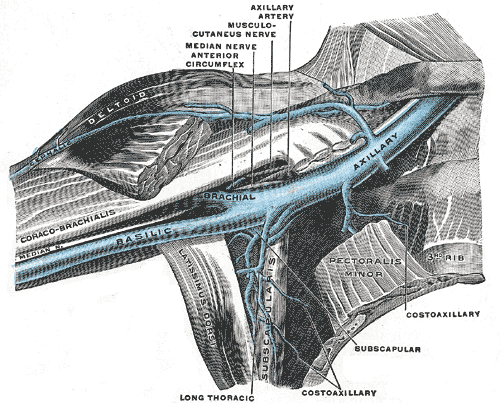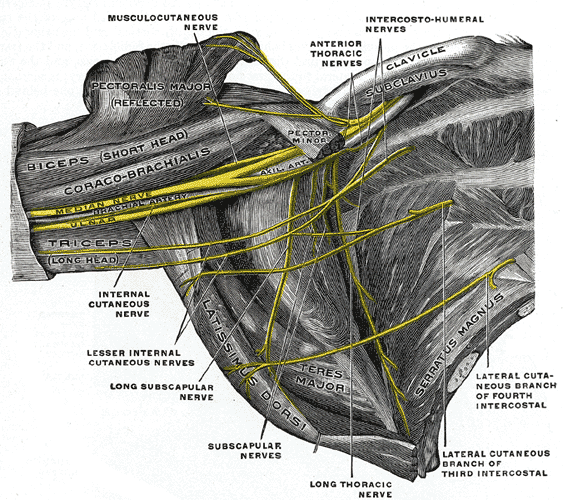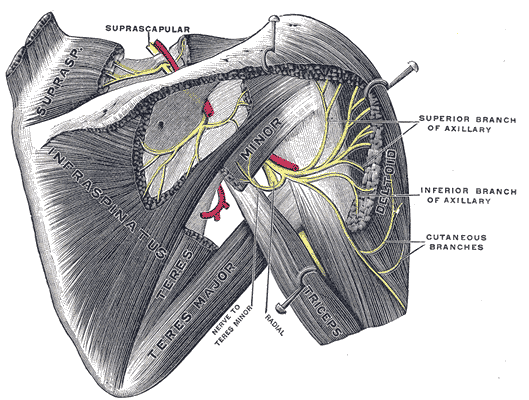Axillary artery
Editor-In-Chief: C. Michael Gibson, M.S., M.D. [1]
In human anatomy, the axillary artery is a large blood vessel that conveys oxygenated blood to the lateral aspect of the thorax, the axilla (armpit) and the upper limb. Its origin is at the lateral margin of the first rib, before which it is called the subclavian artery.
After passing the lower margin of teres major it becomes the brachial artery.
Relation to pectoralis minor: division into three parts
The axillary artery is often referred to as having three parts, with these divisions based on its location relative to the pectoralis minor muscle, which is in front of the artery.
- First part - the part of the artery medial to pectoralis minor
- Second part - the part of the artery that lies behind pectoralis minor
- Third part - the part of the artery lateral to pectoralis minor
Relation to nerves and vein
The axillary artery is accompanied by the axillary vein along its length.
In the axilla, it is surrounded by the brachial plexus. The second part of the axillary artery is the reference for the locational descriptions of the cords in the brachial plexus. For example, the posterior cord of the brachial plexus is so named because it lies posterior to the second part of the artery.
Branches
The axillary artery has several smaller branches. The branches can be remembered, in order, when traveling from the heart, with the mnemonic "Screw The Lawyers Save A Patient" or "She Tastes Like Sweet Apple Pie."[1] It should be noted that the origin of these branches is highly variable (e.g. the posterior and anterior circumflex arteries often have a common trunk). An arterial branch is named for its course, not its origin.
- First part (1 branch)
- Second part (2 branches)
- Third part (3 branches)
Continues as the brachial artery past the inferior border of the teres major.
Clinical Significance
The axillary artery may be safely clamped without endangering the arm, but only in a location proximal to the origin of the subscapular artery. The anastomotic network surrounding the scapula provides an alternate path for collateral circulation to the arm from arteries including the dorsal scapular artery and suprascapular artery.
Additional images
-
The veins of the right axilla, viewed from in front.
-
The right brachial plexus (infraclavicular portion) in the axillary fossa; viewed from below and in front.
-
Suprascapular and axillary nerves of right side, seen from behind.
References
External links
- Template:NormanAnatomy
- Template:DukeOrtho
- Template:SUNYAnatomyLabs - "Axillary Region: Parts of the Axillary Artery"
- Template:SUNYAnatomyFigs - "The axillary artery and its major branches shown in relation to major landmarks."


